A few months ago, Netflix released a food show called Street Food, produced by the same people behind the popular Chef’s Table series.
The show focuses on street food from around the world and the people behind it. Much like Chef’s Table, Street Food has plenty of gorgeous food shots and an abundance of slow motion cooking, chopping, and plating. The episode on Seoul centers around Yoonsun Cho, a woman who owns a small stand in Gwangjang Market. She worked for years to make her small business a success after her family fell into debt. Her featured dish was handmade noodles in an intensely flavored broth, along with a side of her kimchi. It looked delicious.
A few weeks after watching the episode (ok, we watched the whole series of course!), Julie and I found ourselves on the Secret Food Tour Seoul. Our first stop was inside the Gwangjang Market, and as our guide pulled out some chairs for us, I immediately recognized Yoonsun Cho, feverishly dashing around, prepping bowls of noodles, and trying to seduce passers-by to snag any open seats.
Within a few minutes, Yoosun Cho was handing me a bowl of hand-torn noodles in broth with a side of her kimchi. It was going to be a good day.
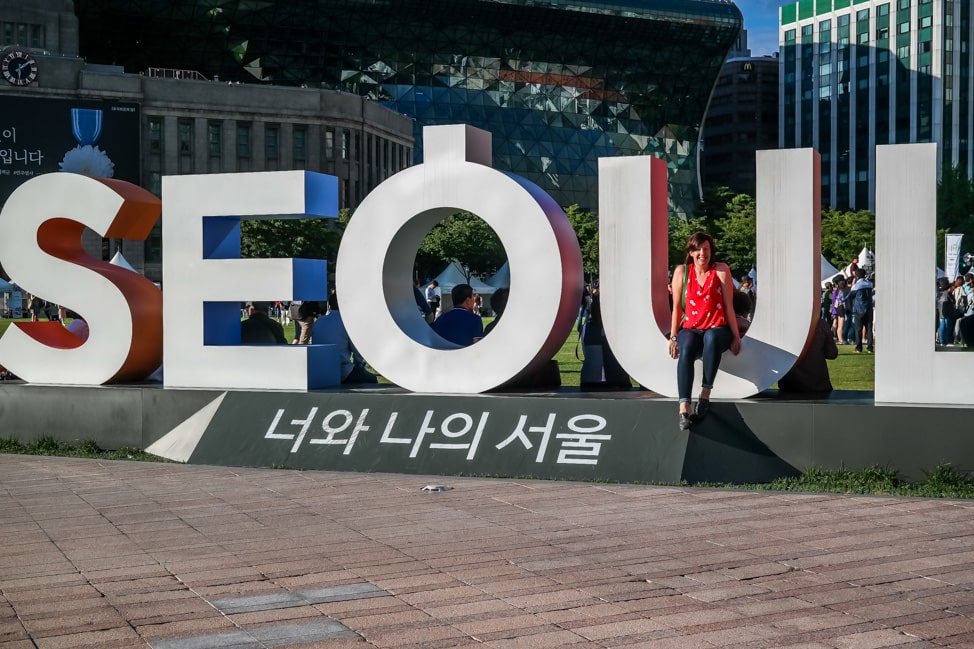
Secret Food Tour Seoul
I have always thought that food tours are a great way to explore any city. Food culture can open the door to better understanding the local people. You can see parts of a city you wouldn’t have discovered on your own, or eat things that you may have never seen before. We’ve done loads of these tours over the years, including with Secret Food Tours in Rome. We decided that the best way to taste a wide variety of Korean cuisine during our long weekend visit to Seoul was to join a tour of other eager eaters.
While most of the locations on the tour are a secret (hence the name), I can say that it started in Gwangjang Market. The market is one of the largest and oldest traditional markets in all of South Korea. Our guide for the day took us through the history of the bustling market, from its founding at the beginning of the 20th century during Japanese occupation, to what it has become today.
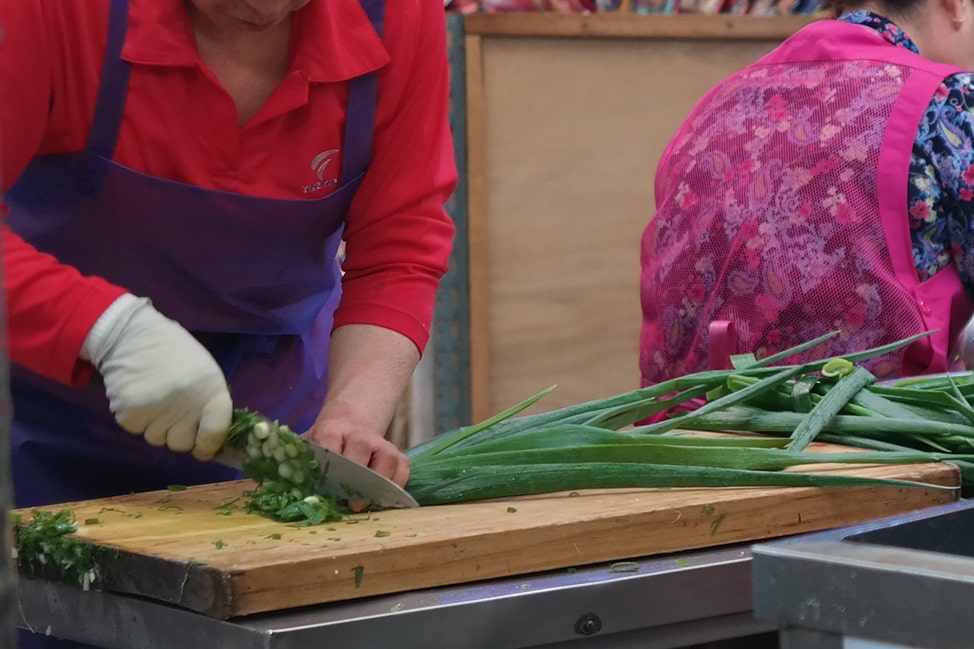
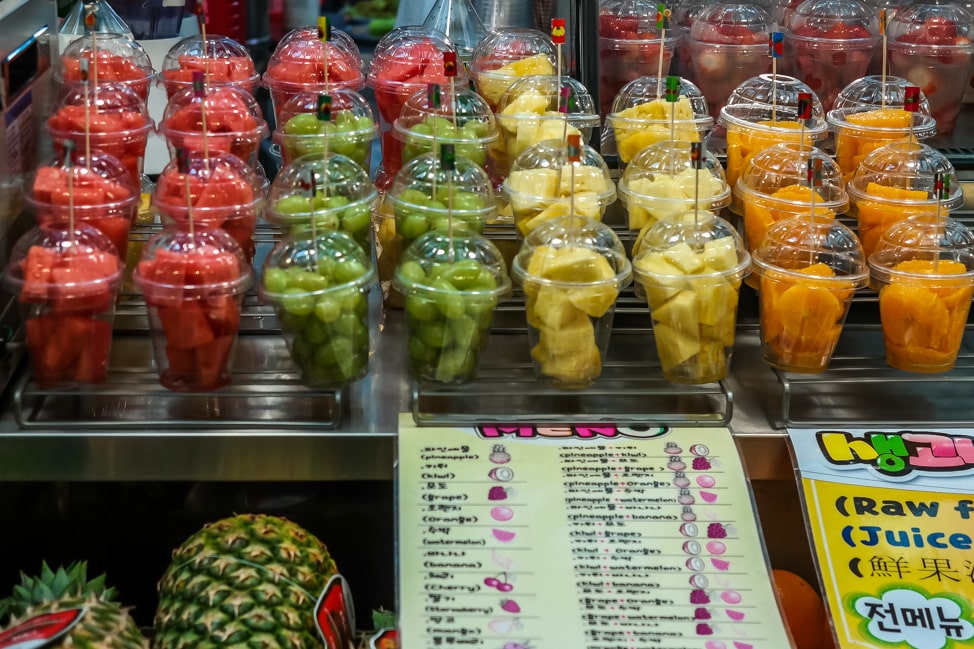
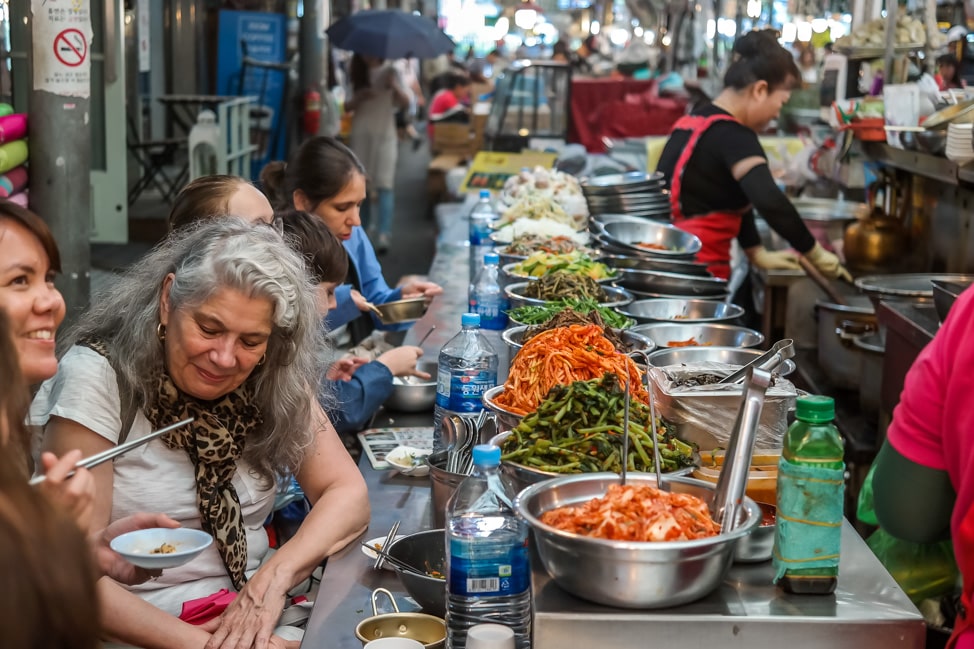
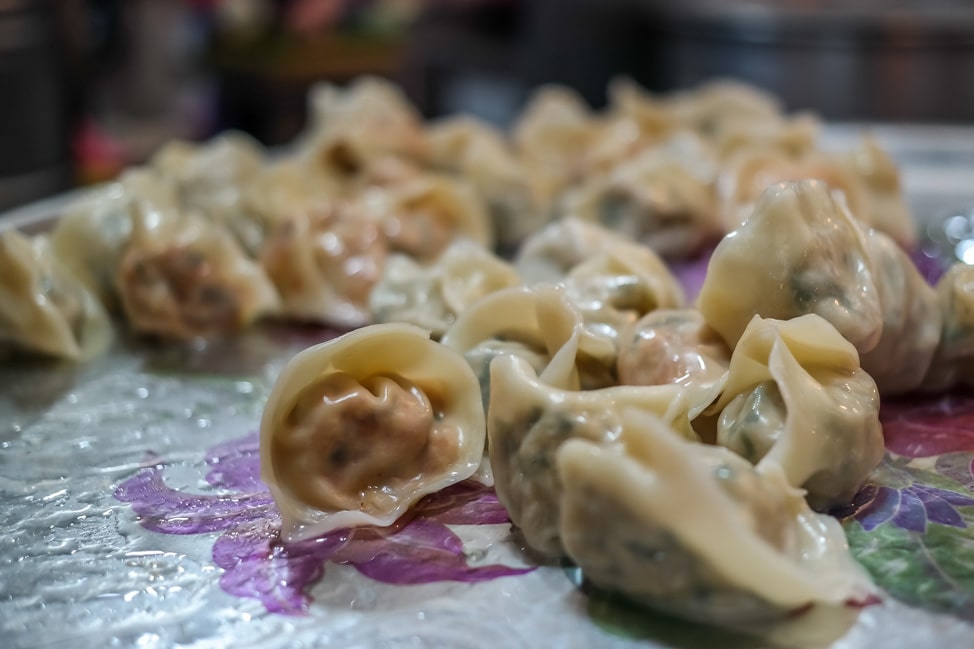
The large, covered market initially sold agricultural and seafood products. As the market expanded, vendors began selling all sorts of items, from household goods to traditional medicine. Eventually, food stalls started popping up to feed the hungry shoppers that descended on the market everyday. Now, the chaotic market is an epicenter for traditional Korean cuisine.
And we got to sample a lot of it.
The soup and kimchi from Yoosun Cho was excellent. The broth, fortified with shrimp, was deeply intense and topped with seaweed. The side dish of kimchi – fermented cabbage with chili paste that is a Korean staple – was the ideal combo of tangy and spicy. A few members on our tour opted for the drinks package, so despite an early start of 10:30am, they cracked open a few bottles of soju (classic Korean liquor made from fermented grains) for all of us to share. Yoonsun quickly came over and provided us with the traditional porcelain cups for drinking soju.
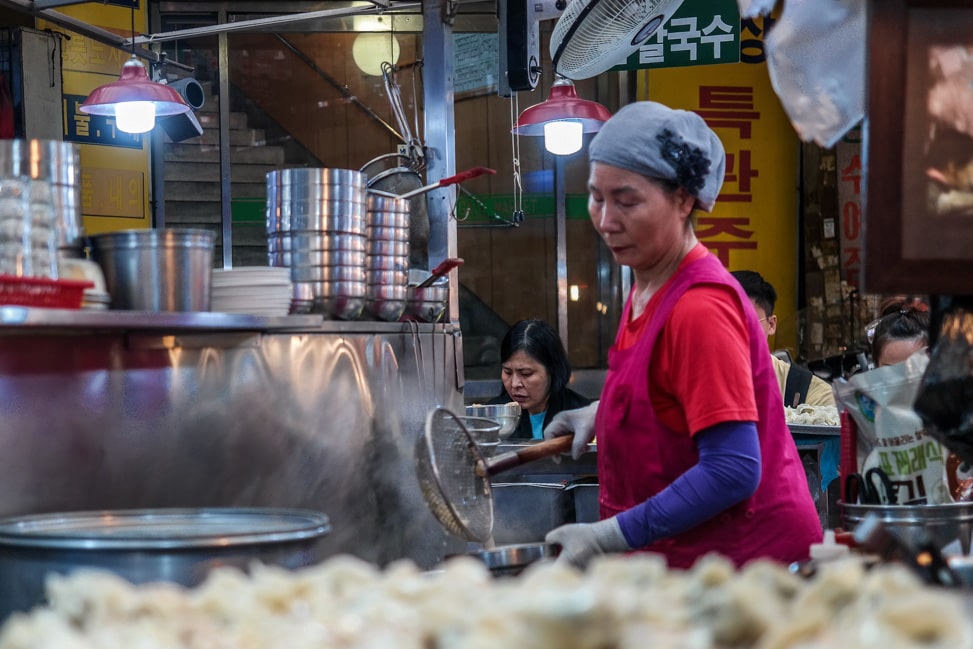
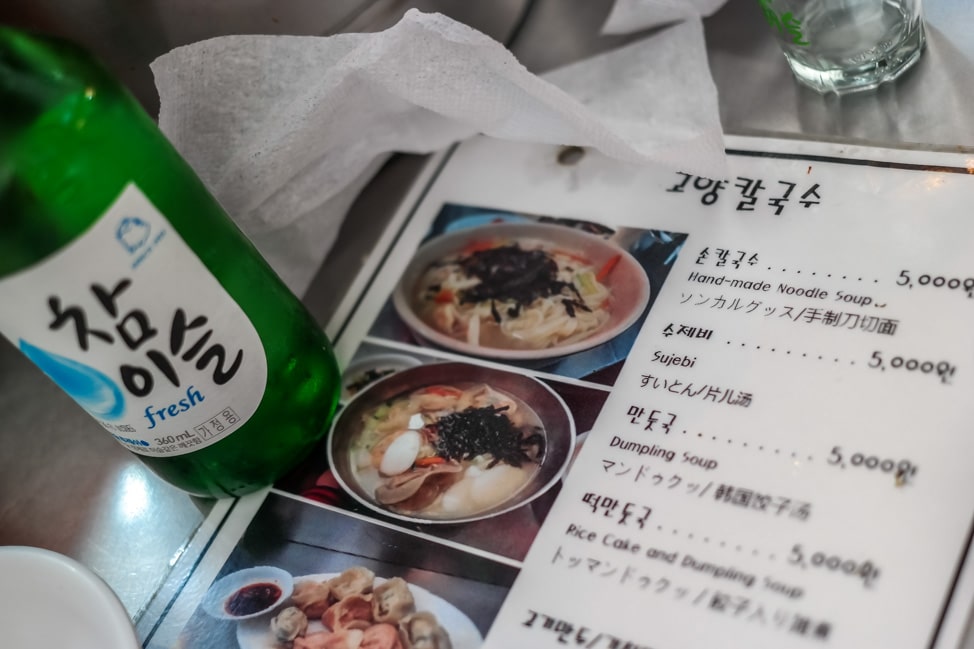
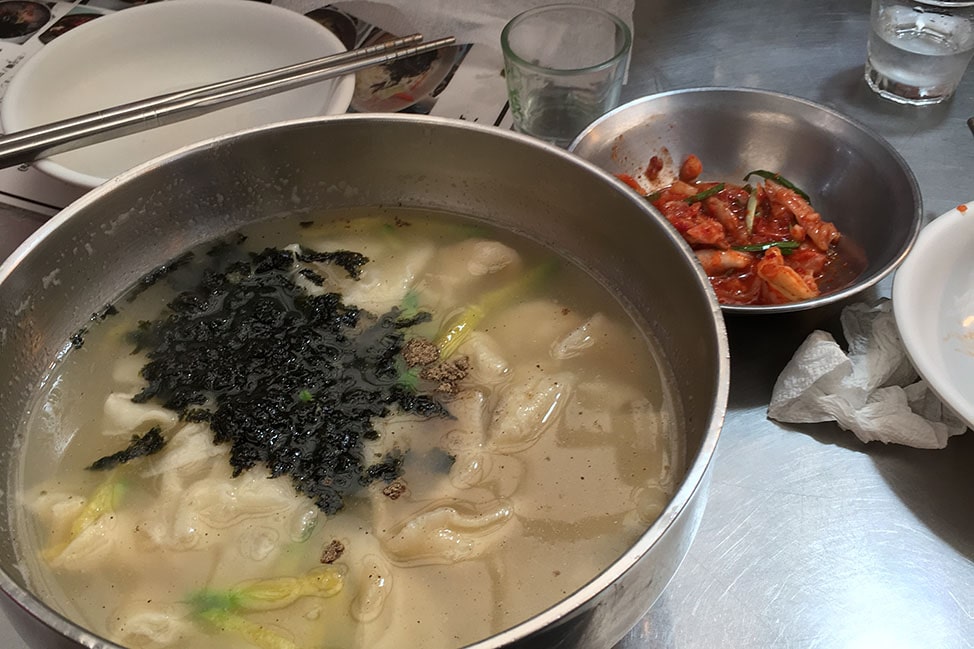
The rest of the morning was spent bopping around Gwangjang market. We skipped the first stall to sell bindae-tteok, as we were informed that it was in fact the first, but is no longer the best. Only the best for us, please!
We ate our bindae-tteok at small restaurant in the market, taking up a few tables in an upstairs dining area. Bindae-tteok is a crispy, savory pancake made from mung beans, similar to the Japanese okonomiyaki. Soaked mung beans are ground and then drained kimchi, pork, and mung bean sprouts are added to the mix. The large pancakes are fried in oil on large griddles until crispy and delicious. They are served with soy sauce and slightly pickled onions, which was a great dipping sauce for the oily pancake.
And of course, kimchi.
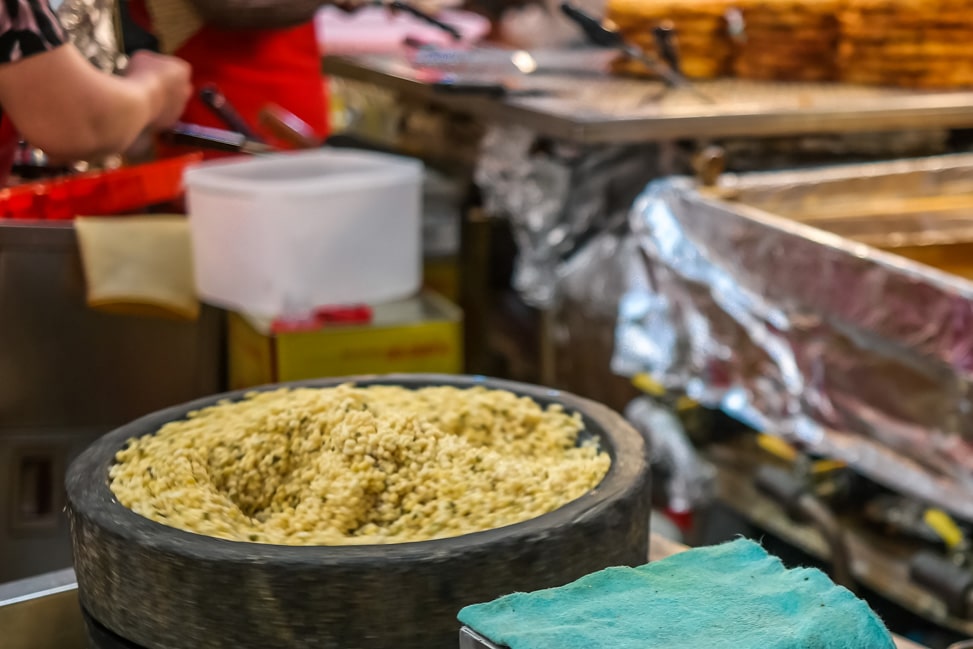
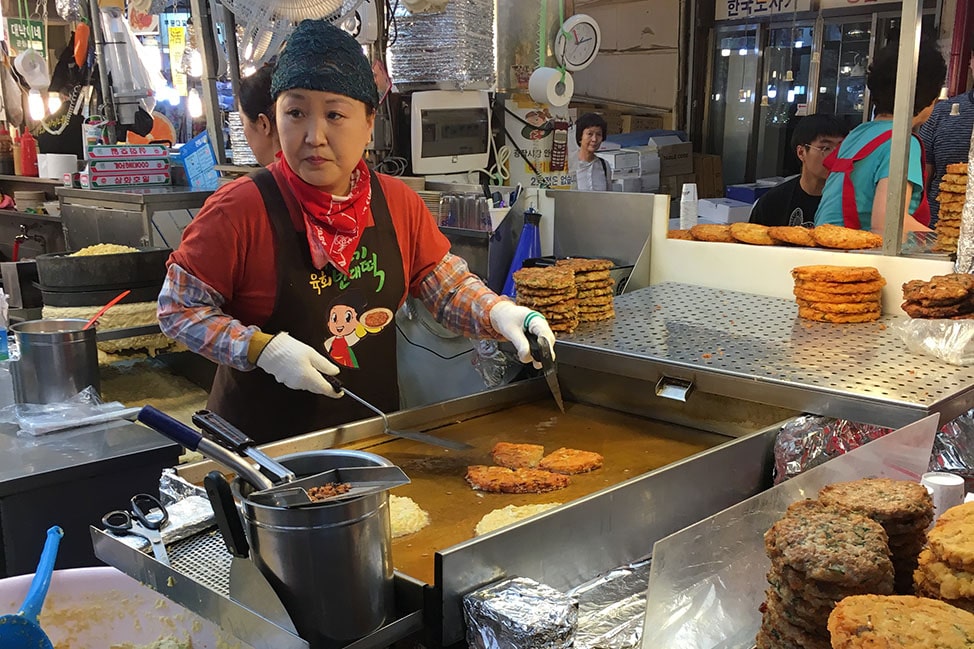
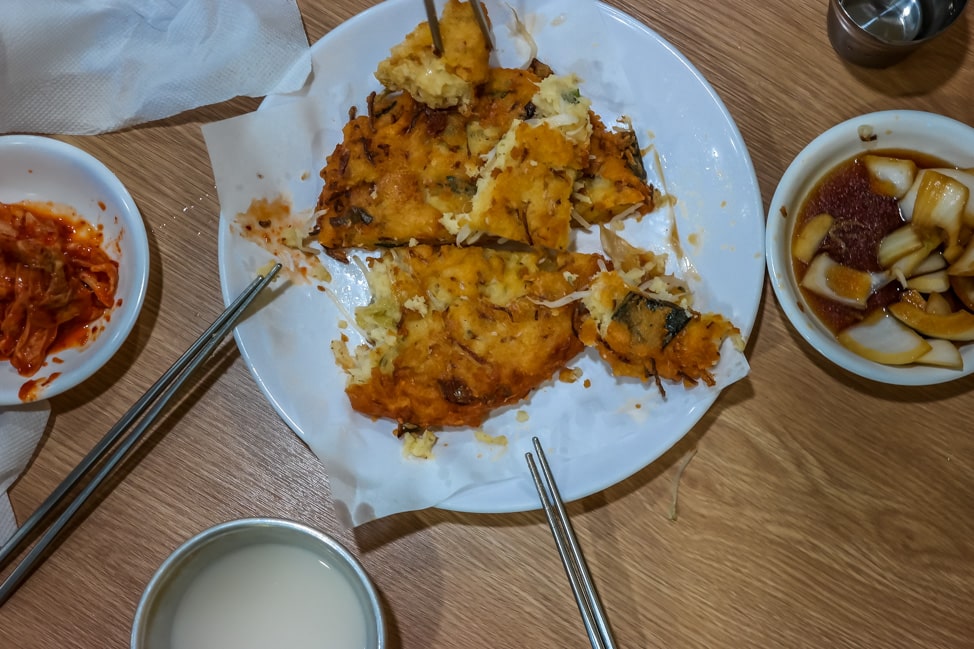
Since this kind of dish is best paired with alcohol, we were provided with a small bottle of makgeoli, a milky, rice-based alcohol. Our guide took the bottle and shook vigiruiously, as the clear liquid become cloudy in the bottle. It was not the most visually appearing cup of rice wine, but the flavor was nice and the acidity was perfect with the fried pancake. Fried food pairs well with booze…who knew?
Our market tour continued, as we walked up and down the various rows of the cluttered market. We eventually settled down at a stall to try a few classic Korean dishes, tteokbokki and mayak gimbal. Tteokbokki is a popular dish of rice cakes cooked in a spicy red sauce made from gochujang (Korean fermented chile paste). Rice cakes are dense and a little chewy, made by pounding cooked rice into a paste, with a texture not dissimilar to Japanese mochi.
The mayak-gimbap is a Korean version of a sushi roll. This particular kind of gimbap at the market is well known and famed to be addictive, which is why mayak (translated as drug) is added to this variety. The filling is vegetarian, consisting of carrots, spinach, and pickled yellow radish. The addictive part comes with the dipping sauce made from soy sauce and spicy hot mustard. Addictive? Not really. Delicious? Definitely.
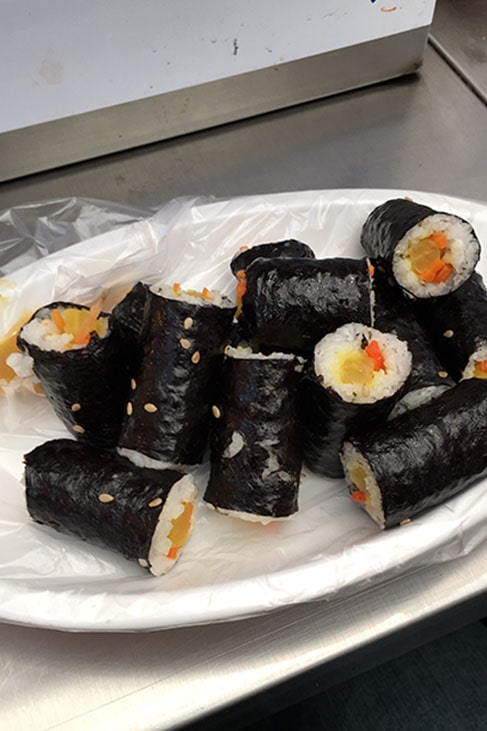
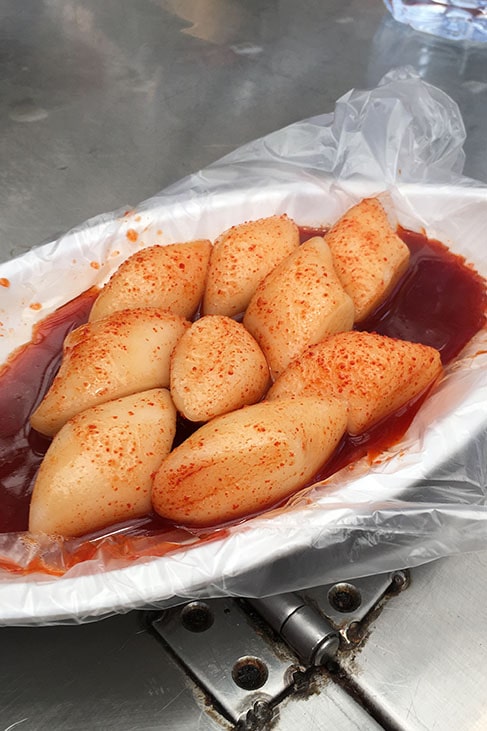
On our way to the final stop in the market, we stopped by a banchan stall, selling dozens of side dishes. Banchan is very popular in Korea, and many restaurants provide at least a few with every meal. At a Korean barbecue, almost a dozen of these tiny dishes will arrive shortly after sitting down. The sampling at this stall was free, so we grabbed a few toothpicks and picked out some items. The lotus root was a bit starchy for my taste, and Julie didn’t love the whole river crab that you eat in one bite, shell and all. Luckily, the other pickles and kimchi hit the spot.
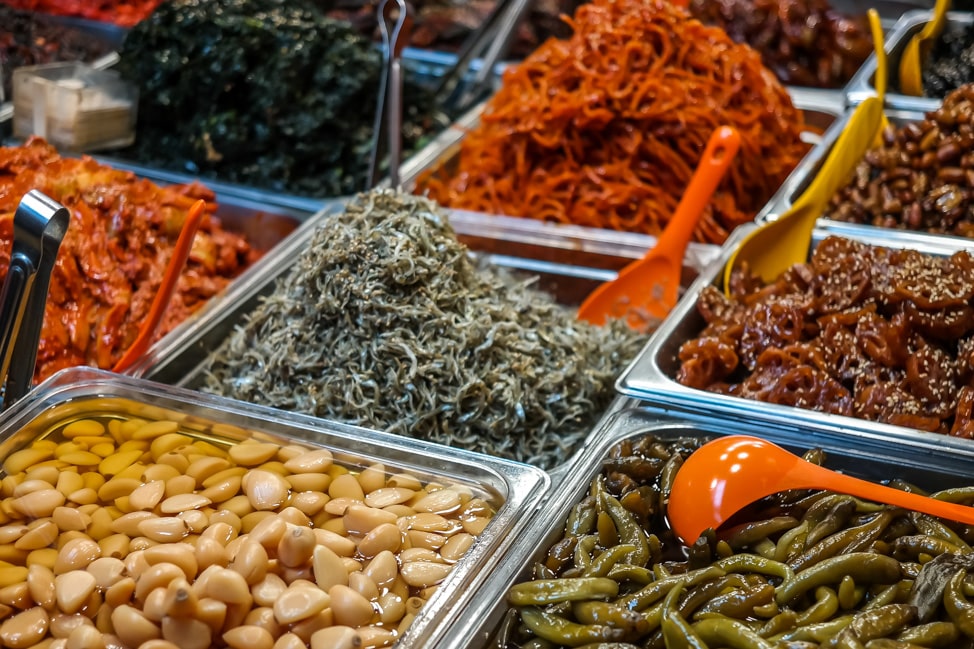
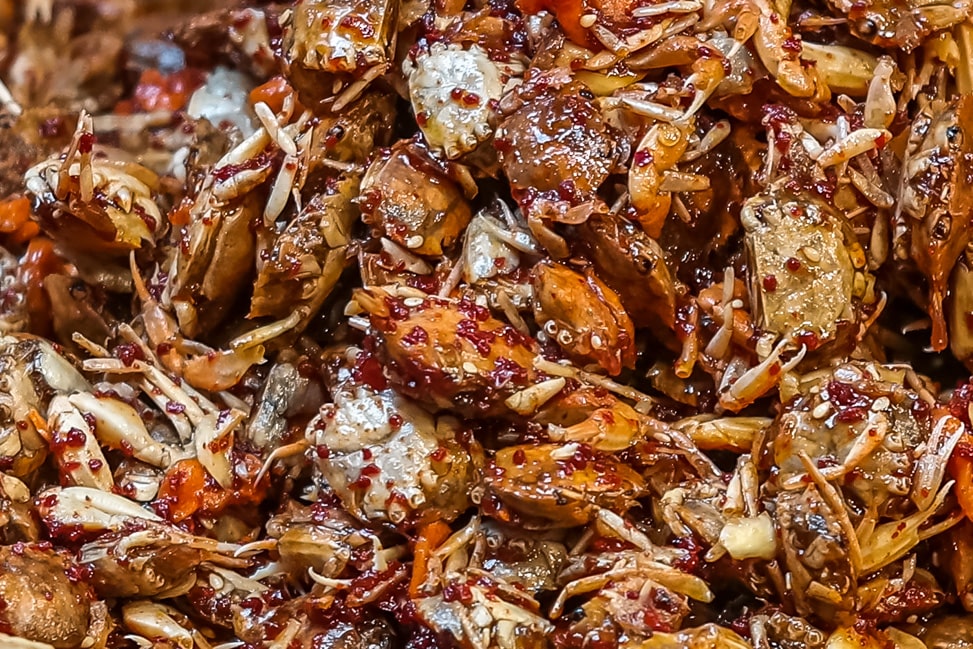
Our last stop in the market was to try bibimbap. Translated as ‘mix rice,’ it is the perfect leftover dish in the Korean home. A base of rice is topped with a wide variety of banchan (whatever you have leftover) and vigorously mixed together. You may be familiar with the more show-stopping dolsot bibimbap, where rice is added to a pre-heated stone bowl and allowed to crisp up before mixing.
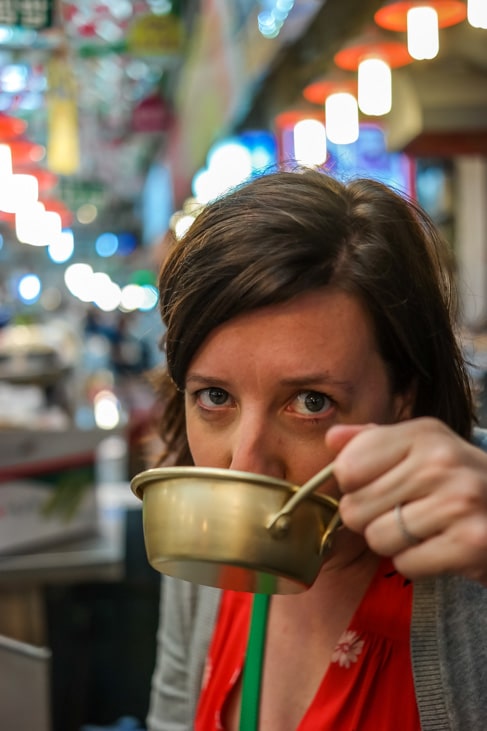
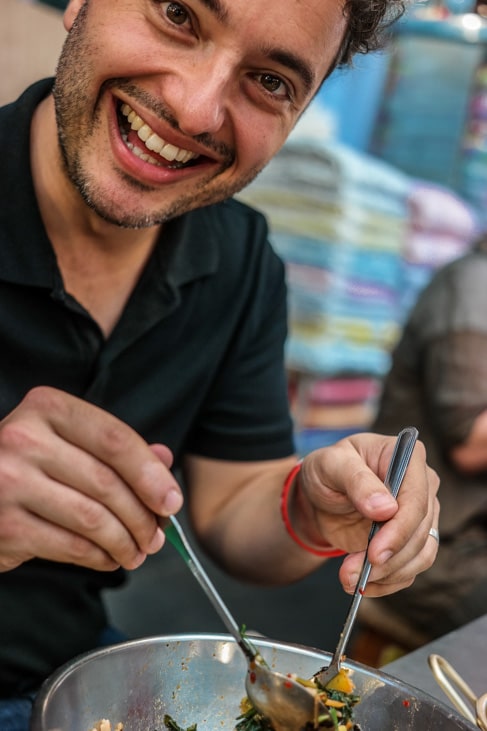
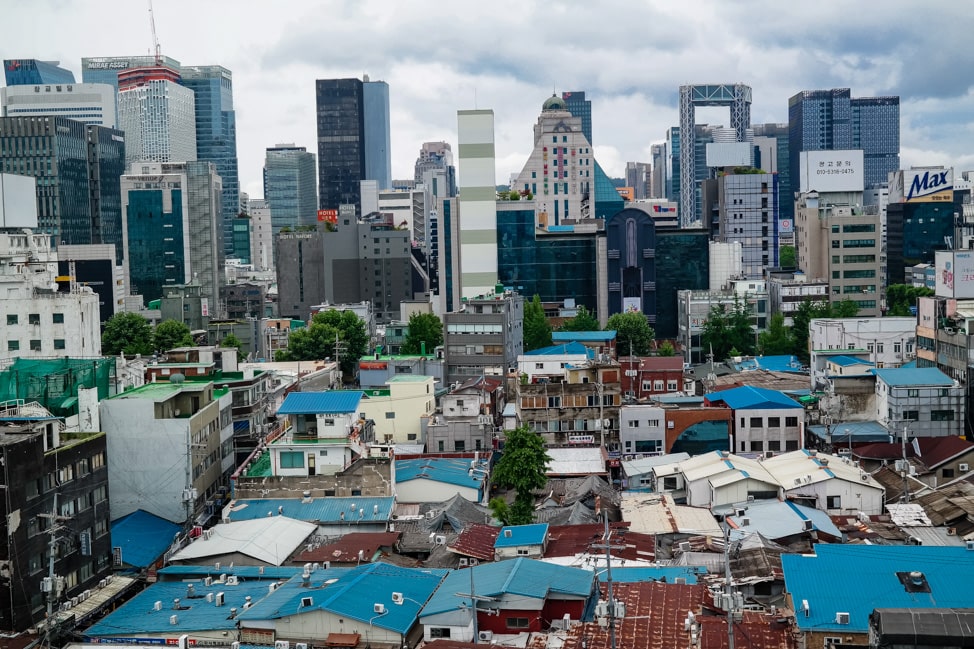
The break and walk allowed for my stomach to recover, so I was excited when we stopped off for some dumplings at a small restaurant in the Inse-dong neighborhood. The place was buzzing with locals, devouring plates of dumplings and little side dishes of pickled daikon radish. We went for the beef dumplings, or mandu.
Our final destination on the food tour was a tea house, located down a small lane in Inse-dong. The small building was once a family home that was converted. It had an open-air courtyard with a small garden, and the interior space was dark wood, with floor seating. The teas were unique, and delicious, with the right amount of sweetness to feel like a treat.
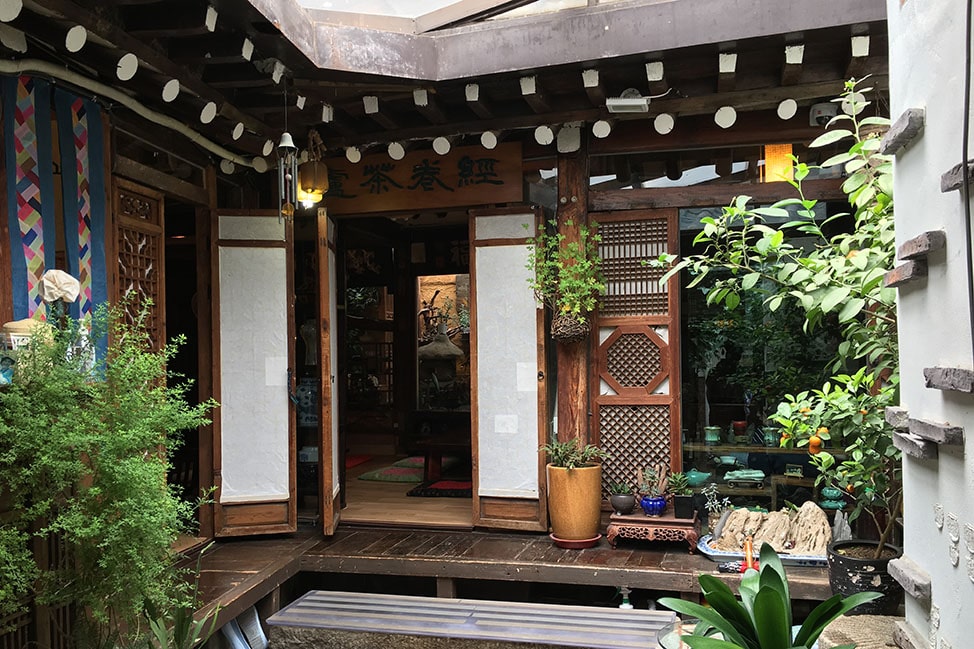
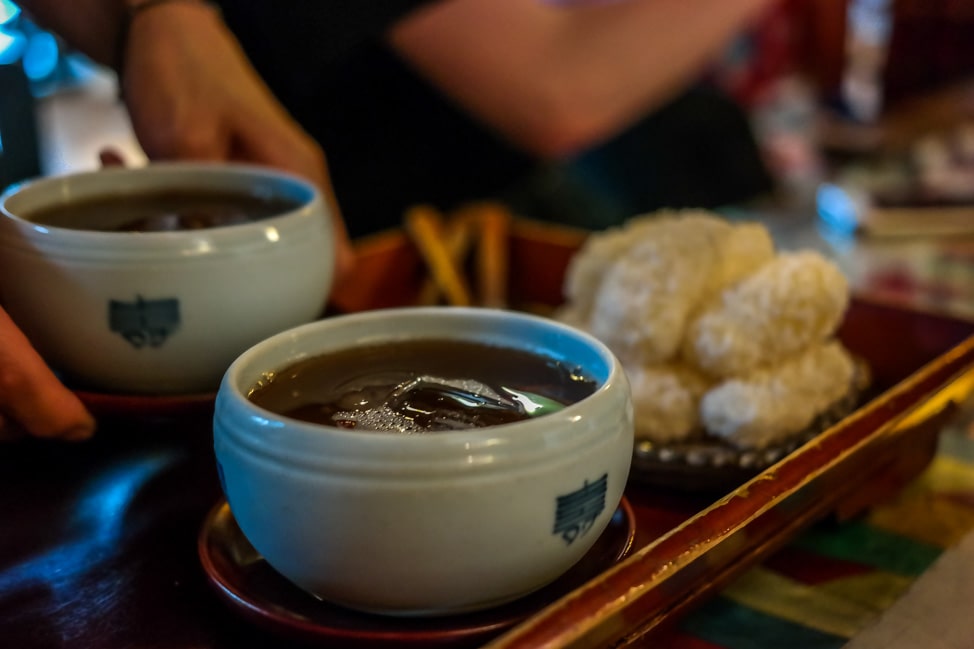
Tea was the perfect end to a very long day, a tour that is advertised for three hours but ended up being nearly five. The crowded market and our group’s persistent chatter delayed us, though we enjoyed getting to know our fellow foodies and savouring the dishes.
We got exactly what we wanted to out of our Secret Food Tour Seoul. We got to try a few new Korean dishes we’ve never had, and we really explored one of the world’s best markets. Plus, Netflix-famous Yoosun Cho made me a bowl of noodle soup. What else could I ask for?
Thank you to Secret Food Tours, who provided our Seoul food tour free of charge. As always, the opinions in this post are our own.

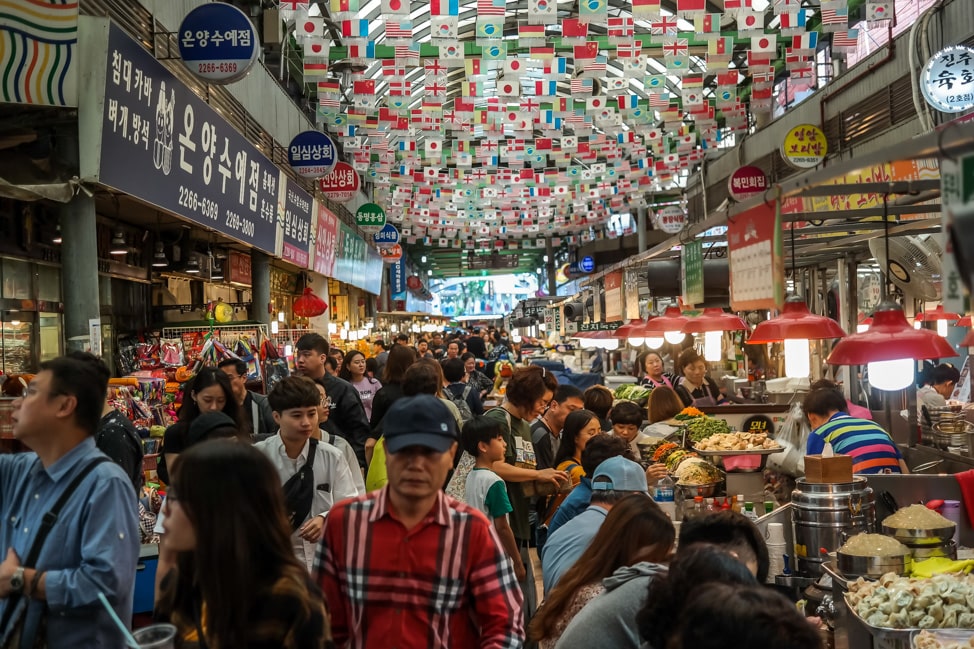










All these photos of the delicious dishes of South Korean cuisine bring back memories! 🙂
Dominique | dominiquetravels.com recently posted…Rhodes – A Three Day Itinerary